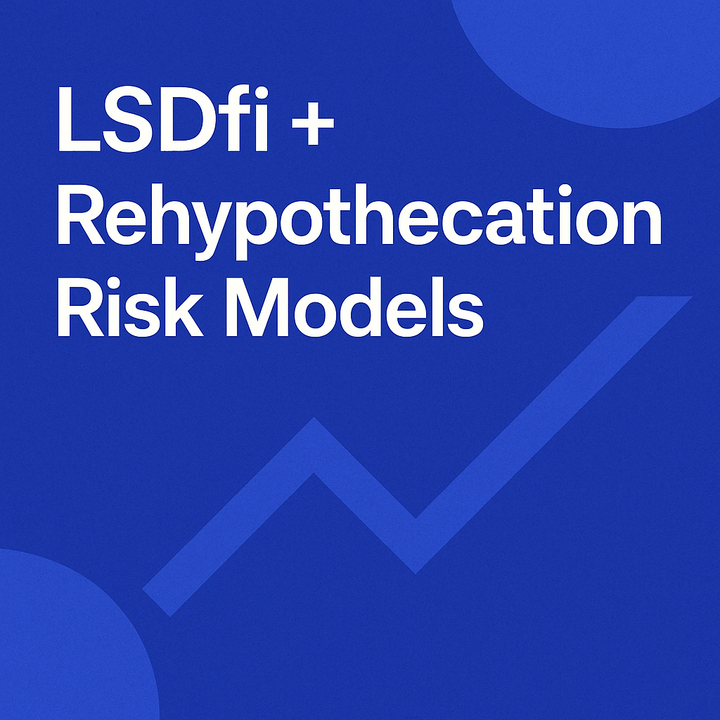Reducing Institutional Overhead with Fogo Chain’s On-Chain Infrastructure

Introduction
Across industries, institutions such as banks, insurance companies, logistics providers, and government agencies are facing an escalating challenge: managing and reducing operational overhead. The infrastructure that supports their day-to-day activities often consists of legacy systems, siloed databases, manual workflows, and layers of intermediaries. These inefficiencies add up, costing billions annually in wasted time, resources, and compliance risks.
As institutions look to adapt to a world thats moving into a digital one, blockchain technology emerges as a promising solution to these persistent problems. However, not all blockchains are the same — many public networks focus on openness and decentralization but lack the scalability, privacy, and compliance features that businesses need.
This is where Fogo Chain enters the picture. Designed specifically to meet the rigorous demands of institutions, Fogo Chain offers a scalable, secure, and compliance-friendly on-chain infrastructure. By adopting Fogo Chain’s technology, institutions stand to dramatically reduce overhead costs while enhancing transparency, automation, and operational efficiency.
What is Fogo Chain?
Fogo is a next-generation Layer 1 blockchain built for fast, efficient on-chain trading. It uses a unique design and Firedancer technology to deliver low latency, quick finality, and high scalability. Fogo is purpose-built with a fully integrated tech stack to support smooth, high-performance operations.
Fogo features a carefully selected validator set, built-in price feeds, a native decentralized exchange (DEX), and integrated liquidity providers — all working together to create a unique trading environment. Supported by a team of trading and engineering experts, Fogo is focused on pushing boundaries and setting a new benchmark for high-performance blockchain infrastructure.
The True Cost of Legacy Institutional Infrastructure
To see the value of Fogo Chain, it helps to first understand where traditional institutions face high costs. These usually come from:
1. Fragmented Data and Reconciliation Efforts
Institutions often use separate systems across departments or partners, leading to inconsistent records. Fixing these differences—usually with manual checks or complex software—takes time and money.
For example, banks spend around $80 billion a year just reconciling transactions, which slows down settlements and delays decisions.
2. Manual Workflows and Third-Party Intermediaries
Despite advances in digital technology, many institutional processes remain manual or semi-automated. Whether approving loans, processing insurance claims, or verifying shipping documents, manual interventions add time and cost, introduce human error, and often rely on expensive third parties such as auditors, legal experts, or brokers.
This not only inflates operational budgets but also increases the risk of fraud or compliance violations.
3. Regulatory Compliance Complexity
Regulatory demands are ever-increasing, requiring institutions to collect, verify, and report large volumes of data. Compliance teams spend a large amount of resources preparing for audits, managing Know Your Customer (KYC) and Anti-Money Laundering (AML) processes, and navigating a constantly evolving legal landscape.
According to a Deloitte survey, large financial institutions can spend over $1 billion annually on compliance-related activities, a cost that has only grown in recent years.
How Fogo Chain Reduces Institutional Overhead
Fogo Chain tackles these overhead issues head-on by delivering an on-chain infrastructure purpose-built for institutions. Here’s how:
1. Shared, Immutable Ledgers for Instant Reconciliation
At the heart of Fogo Chain’s value is its use of shared ledgers. By enabling multiple parties to operate on a single source of truth, Fogo Chain eliminates the need for repeated reconciliation.
Every transaction, contract execution, or data update is immutably recorded on the chain, visible to authorised participants in real time. This instant synchronisation drastically reduces disputes, manual audits, and delays.
In financial services, this means settlements that once took days can happen in seconds, cutting costs associated with capital lockups, counterparty risk, and administrative overhead.
2. Automation via Smart Contracts
Fogo Chain leverages smart contracts — self-executing code that automatically enforces rules and workflows without human intervention. These programmable contracts can automate complex processes across industries, including:
- Trade finance: Automatically releasing payments once shipping documents are verified on-chain.
- Insurance: Triggering claims payouts instantly based on verified external data like weather reports or IoT sensors.
- Supply chain: Automatically updating provenance records as goods move through different checkpoints.
By reducing the need for manual oversight, smart contracts cut labor costs, reduce errors, and speed up business cycles.
3. Built-In Compliance and Regulatory Tools
Fogo Chain is designed with regulatory compliance at its core. Features include:
- On-chain identity management: KYC and AML processes integrated directly on-chain ensure that participants meet regulatory requirements without off-chain friction.
- Immutable audit trails: Every transaction is time-stamped and permanently recorded, making audits faster and more reliable.
- Permissioning and privacy controls: Role-based access and private transaction layers protect sensitive data while maintaining transparency for authorized parties.
This compliance-ready design reduces the resource-intensive nature of regulatory reporting and lowers the risk of penalties.
4. Enterprise-Grade Scalability and Integration
Unlike many public blockchains, Fogo Chain is engineered to meet the high volume and speed requirements of institutional operations. It supports:
- High throughput and low latency: Handling thousands of transactions per second with near-instant finality.
- Modular network architecture: Including private or permissioned chains tailored for enterprise needs.
- Robust APIs and SDKs: Seamless integration with legacy enterprise resource planning (ERP) systems, financial platforms, and existing workflows.
This lets institutions upgrade incrementally, adopting blockchain where it delivers the most value without disrupting their entire IT stack at once.
Real-World Impact: Potential Savings Across Industries
The operational cost savings unlocked by Fogo Chain’s on-chain infrastructure are substantial:
- Banking and Financial Services: The global banking sector spends hundreds of billions annually on back-office operations. By adopting Fogo Chain’s shared ledger and smart contracts, banks could reduce these costs by 15-20%, translating to tens of billions in savings. Faster settlements also free up liquidity, boosting profitability.
- Insurance: Automating claims processing with smart contracts can reduce processing times from weeks to minutes while lowering administrative costs by over 80%. This means insurers can redirect resources toward risk assessment and customer service.
- Supply Chain and Trade: Digitising and automating document flows on Fogo Chain can eliminate delays and fraud, reducing costs tied to lost goods, manual inspections, and disputes. The World Economic Forum estimates blockchain could save the global supply chain industry up to $100 billion annually.
- Government and Identity Services: On-chain identity verification reduces fraud and administrative overhead in public benefits distribution, voting systems, and licensing.
What Makes Fogo Chain Unique?
While there are many blockchain projects vying for institutional attention, Fogo Chain stands out by focusing exclusively on enterprise needs rather than retail hype or pure decentralization. Key differentiators include:
- Compliance by design: Regulatory features built into the protocol.
- Enterprise tooling: Developer kits, dashboards, and support tailored for institutional developers and compliance officers.
- Flexible architecture: Supporting permissioned and hybrid models to meet privacy and governance needs.
- Interoperability: Bridges to existing financial networks and other blockchains.
These factors position Fogo Chain not as a speculative platform but as a practical infrastructure upgrade for institutions.
Conclusion
As institutions grapple with increasing complexity and cost pressures, the shift to blockchain infrastructure is no longer optional — it’s inevitable. Fogo Chain offers a clear path forward by enabling institutions to reduce overhead, automate workflows, and stay compliant on a trusted digital platform.
By adopting Fogo Chain’s on-chain infrastructure, institutions can unlock billions in savings, transform their operations, and position themselves at the forefront of the digital economy. The future is on-chain — and Fogo Chain is ready to lead institutions there.
References
- Accenture. (2016). Banking on Blockchain: A value analysis for investment banks. Accenture. https://www.accenture.com/us-en/insight-banking-on-blockchain
- Deloitte. (2017). The future of regulation: Principles for regulating emerging technologies. Deloitte Insights. https://www2.deloitte.com/insights/us/en/industry/public-sector/future-of-regulation.html
- Fogo Foundation. (2025, March 31). What is Fogo? Fogo. https://www.fogo.io/blog/what-is-fogo
- J.P. Morgan. (2021). Onyx by J.P. Morgan: Blockchain and the future of payments. https://www.jpmorgan.com/onyx
- McKinsey & Company. (2020). Blockchain beyond the hype: What is the strategic business value? https://www.mckinsey.com/business-functions/mckinsey-digital/our-insights/blockchain-beyond-the-hype
- Mitosis University. (n.d.). Blockchain. https://university.mitosis.org/blockchain/
- Mitosis University. (n.d.). Decentralized exchange (DEX). https://university.mitosis.org/decentralized-exchange-dex/
- Mitosis University. (n.d.). Glossary. https://university.mitosis.org/glossary/
- Mitosis University. (n.d.). Layer 1. https://university.mitosis.org/layer-1/
- Mitosis University. (n.d.). Liquidity. https://university.mitosis.org/liquidity/
- Mitosis University. (n.d.). Liquidity provision. https://university.mitosis.org/liquidity-provision/
- Mitosis University. (n.d.). Slippage. https://university.mitosis.org/slippage/
- Mitosis University. (n.d.). Smart contract. https://university.mitosis.org/smart-contract/
- Mitosis University. (n.d.). Validator. https://university.mitosis.org/validator/
- World Economic Forum. (2020). Redesigning trust: Blockchain deployment toolkit. https://www.weforum.org/reports/blockchain-deployment-toolkit


Comments ()